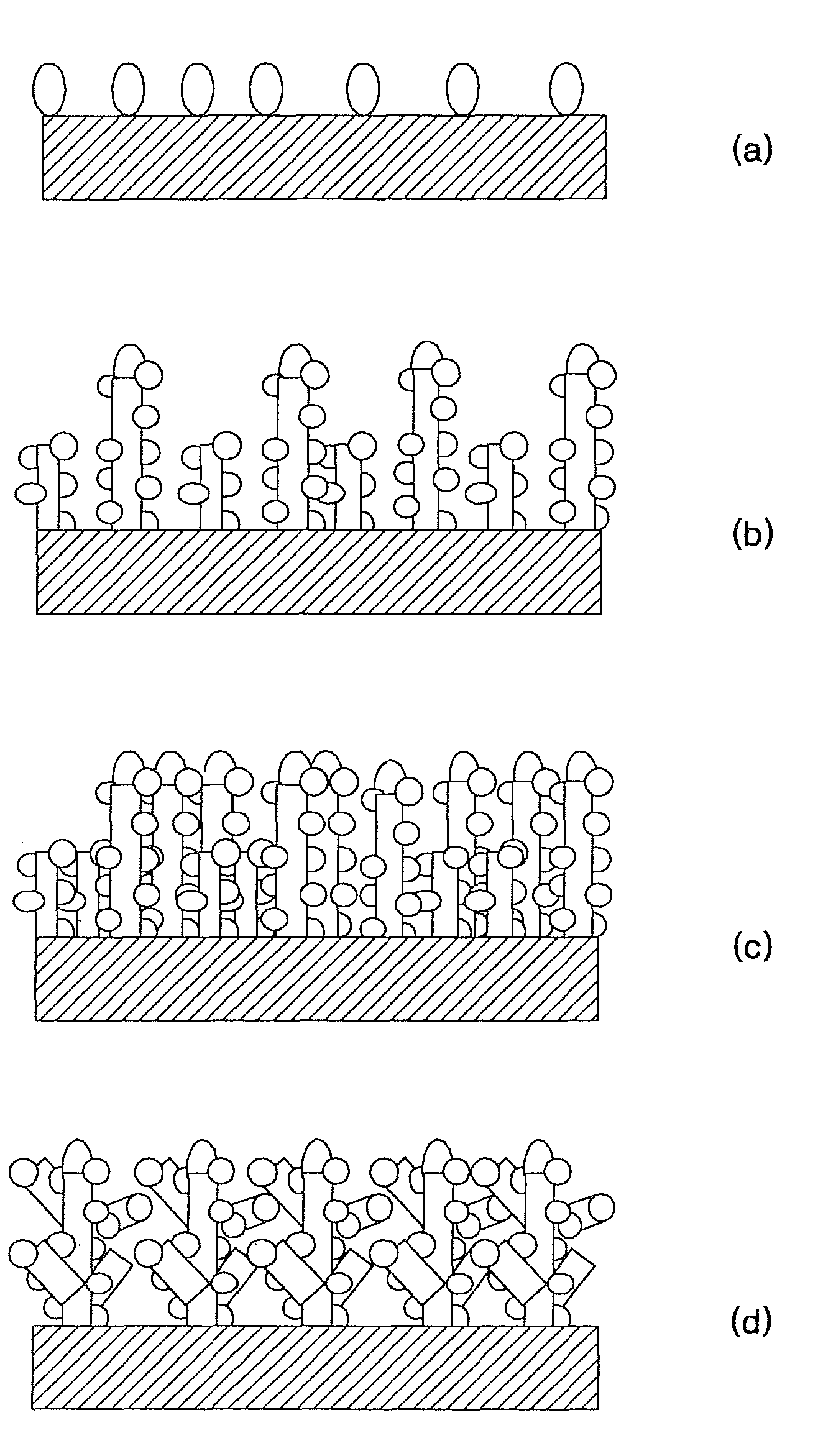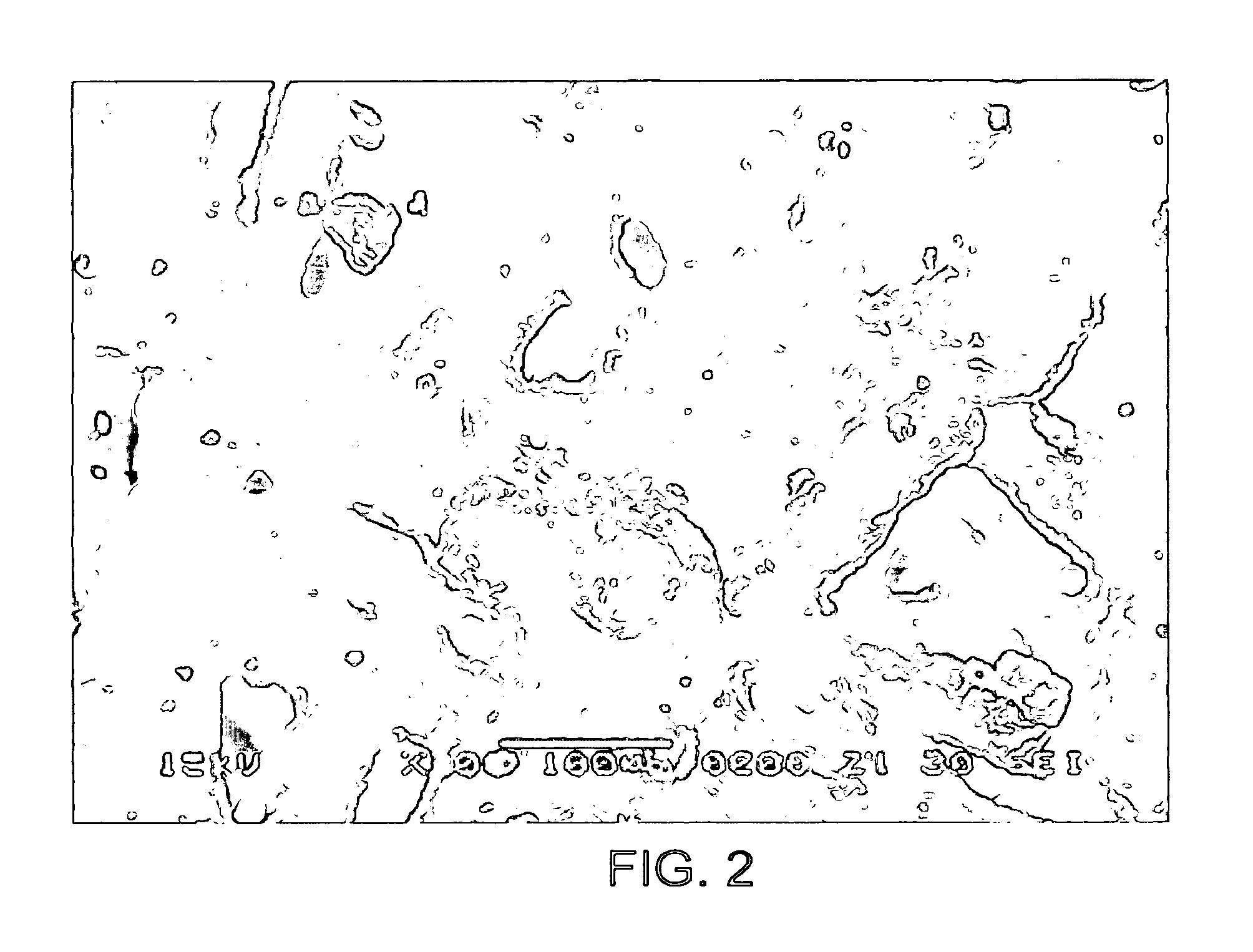Carbon nanotubes for fuel cells, method for manufacturing the same, and fuel cell using the same
a technology of carbon nanotubes and fuel cells, applied in cell components, nanoinformatics, electrochemical generators, etc., can solve the problems of limited area where carbon nanotubes are grown, insufficient surface area of carbon carrier and electrical conductivity, and insufficient dispersion of catalysts in electrode backing layers, etc., to achieve the effect of improving efficiency
- Summary
- Abstract
- Description
- Claims
- Application Information
AI Technical Summary
Benefits of technology
Problems solved by technology
Method used
Image
Examples
example 1
[0041]Platinum (Pt) as a metallic catalyst was dispersed over a water-proofed carbon paper serving as a carbon substrate for 1 minute by electrophoresis, and a uniform dispersion of the Pt particles was confirmed using scanning electron microscope (SEM)-energy dispersive spectroscopy (EDS). The result is shown in FIG. 2. The carbon substrate over which the Pt particles had been uniformly distributed was mounted in a quartz boat and placed at the center of a reactor. The reactor was purged with argon gas at 5000 sccm under atmospheric pressure while the temperature of the reactor was elevated to 500. When the temperature of the reactor reached 500, acetylene was supplied into the reactor as a carbon source gas at 10 sccm under atmospheric pressure for 60 minute to synthesize carbon nanotubes. Next, while argon gas was supplied into the reactor at 300 sccm under atmospheric pressure, the temperature of the carbon nanotubes were dropped to room temperature to provide carbon nanbtubes d...
example 2
[0042]Carbon nanotubes were synthesized in the same manner as in Example 1, except that Fe2O3 instead of Pt was used as the catalyst. As a result, carbon nanotubes doped with Fe particles uniformly to a degree of 2 mg / cm2 were obtained.
example 3
[0043]Branched carbon nanotubes were synthesized in the same manner as in Example 1, except that, after 10 minutes from the supply of the carbon source gas to allow carbon nanotubes to grow to some extent, hydrogen gas was supplied into the reactor at 50 sccm for 20 minutes. As a result, branched carbon nanotubes doped with the catalyst particles uniformly to a degree of 2 mg / cm2 were obtained.
[0044]As described above, carbon nanotubes whose internal and external walls are uniformly doped with metallic catalyst particles having a diameter of a few nanometers according to the present invention, which are directly grown over a carbon substrate, have a wide specific surface area, especially when the carbon nanotubes are branched off, so that the carbon nanotubes according to the present invention maximize the reaction efficiency in an electrode when used for the electrode of a fuel cell. In addition, since the carbon nanotubes are directly grown over a carbon substrate that can be used...
PUM
| Property | Measurement | Unit |
|---|---|---|
| temperature | aaaaa | aaaaa |
| room temperature | aaaaa | aaaaa |
| room temperature | aaaaa | aaaaa |
Abstract
Description
Claims
Application Information
 Login to View More
Login to View More - R&D Engineer
- R&D Manager
- IP Professional
- Industry Leading Data Capabilities
- Powerful AI technology
- Patent DNA Extraction
Browse by: Latest US Patents, China's latest patents, Technical Efficacy Thesaurus, Application Domain, Technology Topic, Popular Technical Reports.
© 2024 PatSnap. All rights reserved.Legal|Privacy policy|Modern Slavery Act Transparency Statement|Sitemap|About US| Contact US: help@patsnap.com










